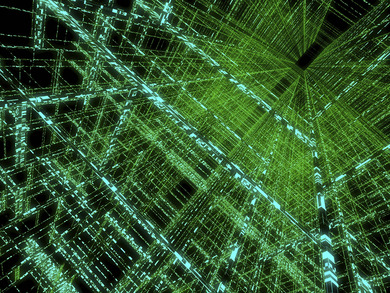From the virtual library into the matrix
From the virtual library into the matrix
Libraries are transforming into interactive archives available worldwide in realtime.
Bernhard Robben, Der Computer als Medium, 2006
Virtual libraries are all about the availability of knowledge through the universal medium of the Internet and a new area of knowledge that is networked and multimedia-based. At the same time, the virtual library is a universal presentation based on the traditions of a millennium-old history of books and writing: it creates access to the most varied of media form and it embodies an old utopia – access to encyclopaedic knowledge. The book medium will probably increasingly disengage itself from its physical body while remaining a cultural “format” in spite of everything.
In 2006, Patrick Danowski and Lambert Heller coined the term “Library 2.0”, a library in which users participate, thereby becoming a part of the library establishment themselves. The allocated roles between the specialist librarian who prepares the knowledge and the user who benefits passively from it are reversed as both converge. The virtual library is not limited by content. A literary model for this limitlessness has already appeared in Jorge Luis Borgesʹ novella La biblioteca de Babel (The Library of Babel). A digital parallel universe of all conceivable information is the idea behind the virtual library that also takes its inspiration from the matrix concept, which in the film of the same name by the Wachowski brothers (1999) represents a media-based reality controlled by artificial intelligence.

